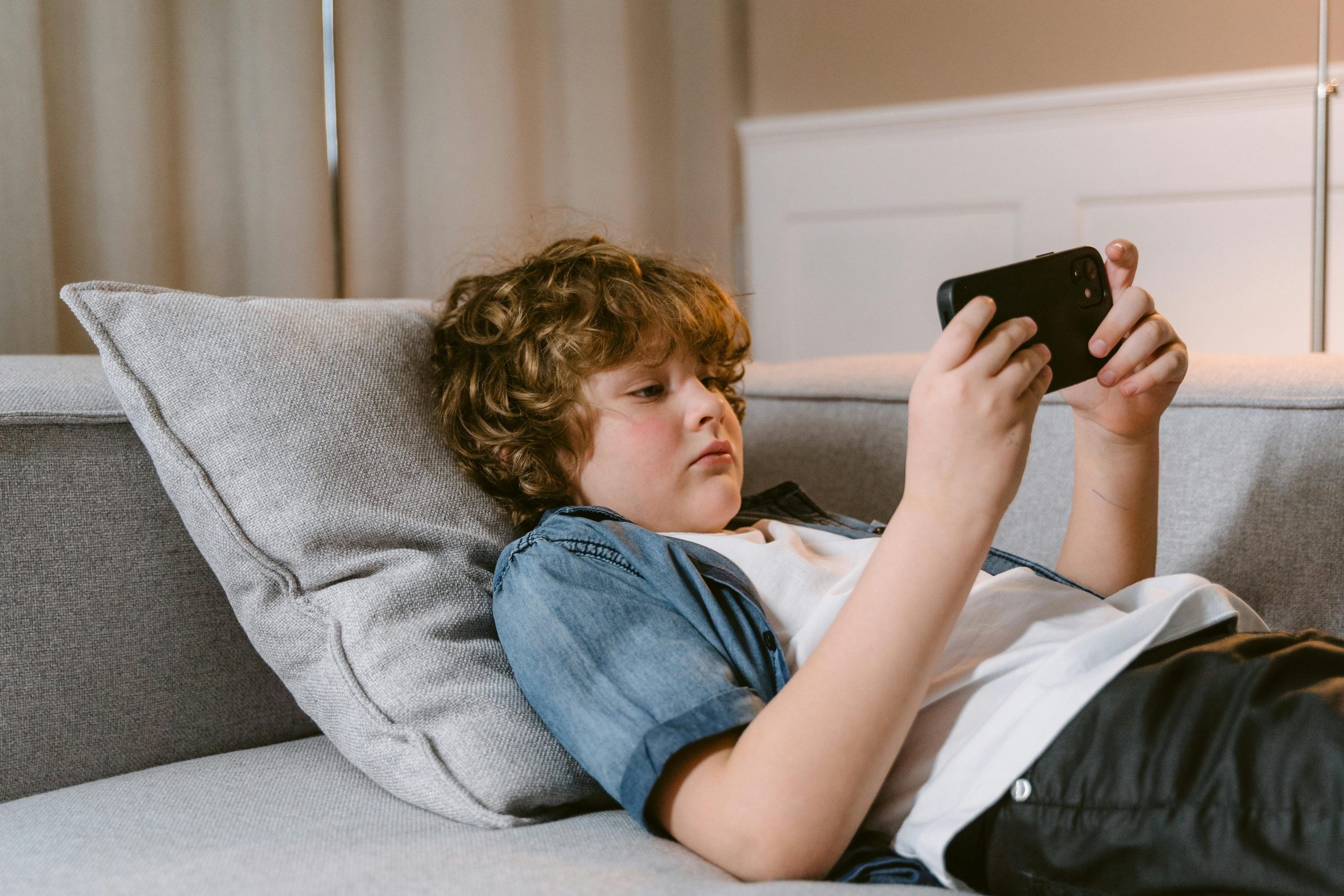

By Dr Georgia Meisel, Child Psychologist at Kidswell Health
We all know that screens are part of everyday life from classrooms to TV shows to FaceTime. But many parents worry (rightly) about the impact of too much screen time on their child’s mental health.
As clinical psychologists, we’re often asked: “Is screen time really bad for kids?”, “How much is too much?”, “Could screens be making my child more anxious, angry, or withdrawn?”
Let’s explore what the research says and what you can actually do about it.
It’s not just how much time a child spends on a screen. It’s also what they’re doing, when, and how it fits into their life overall.
Studies have consistently shown that high screen use (especially in the evening) is linked with shorter sleep duration, difficulty falling asleep, and lower mood. Blue light exposure suppresses melatonin, and overstimulating content can wind up rather than wind down the nervous system.
Fast-paced, highly engaging apps and games provide instant feedback, but they don’t teach patience, frustration tolerance, or how to manage disappointment. Kids may struggle more with boredom or big feelings in real life, where feedback is slower and more uncertain.
For adolescents, research shows a link between high social media use and increased rates of anxiety, depression, and body dissatisfaction, especially for girls. Passive scrolling and comparison can fuel self-criticism. The adolescent brain is wired to seek social approval, and social media make that approval (or rejection) visible in real-time.
Screens often crowd out things that protect mental health: play, movement, face-to-face connection, and time in nature. A sedentary, screen-dominated routine may be low in the very things that help kids cope.
So, as parents what should we do?!
The truth is, some screen use can be positive, especially educational tools, video chats with loved ones, or creative apps used with an engaged adult. It’s not about banning screens. It’s about finding balance.
✅ Create screen time boundaries – not just for how long, but also when (e.g., no screens 1 hour before bed)
✅ Co-view and talk about content – ask what they’re watching, and why they like it
✅ Prioritise offline connection and play – even small doses buffer stress
✅ Watch for signs of dysregulation – like meltdowns, withdrawal, or disrupted sleep after screen use
✅ Model mindful tech habits – kids notice how we use screens too
Why Parents Need to Set Screen Time Boundaries
Children aren’t developmentally equipped to set healthy limits for themselves. That’s our job as caregivers.
Here’s some of the science behind why:
The prefrontal cortex (responsible for impulse control, long-term planning, and decision- making) doesn’t fully mature until the mid-20s. Young children, especially, are driven by the emotional, pleasure-seeking part of the brain (the limbic system), which lights up in response to dopamine hits from screen-based rewards. Screens offer instant gratification. Things like reading, problem-solving, or waiting in line don’t.
Young children don’t perceive time like adults. “Five more minutes” might feel like five seconds when they’re immersed in a show or game. That’s why they melt down – not because they’re being “naughty,” but because they feel yanked from something pleasurable without enough support.
Stopping something enjoyable and switching tasks requires emotional flexibility, a skill that develops slowly and needs adult scaffolding.
1: Set Clear, Predictable Boundaries.
Children need to know what to expect, when, and why. Be consistent – predictable boundaries reduce anxiety and resistance over time.
Try saying:
“You can watch one episode, and then it’s time to help with dinner.”
“You can play until the timer rings, then we’ll go outside.”
“We don’t use tablets after dinner because our brains need rest to sleep.”
2: Give Warnings and Use Visual Timers
Try to:
Repetition helps the child’s brain start to anticipate endings and transitions, building emotional regulation.
3: Help Them Transition (Don’t Expect Them to Do It Alone)
Instead of saying, “Turn it off now,” offer an active, connective prompt:
Try to say:
“Let’s pause it here. Do you want to help me crack the eggs or stir the batter?”
“Pick your final move, then I’ll set the timer for tidy-up.”
“Would you rather jump 10 times or do a big stretch to move your body after sitting still?”
You’re guiding their nervous system through a shift, not just issuing a command.
4: If They Don’t Stop When Asked.
Stay calm, kind, and firm. This is hard but crucial for long-term learning.
Try to say:
“I see it’s hard to stop. That’s okay. I’ll help you now.” (And gently turn off the device or guide their hand)
“You’re showing me it’s hard to use the tablet respectfully today. That means we’ll take a break from it tomorrow.”
Use logical consequences, not punishments and follow through consistently.
Screens are part of modern life but they don’t have to dominate it. Setting boundaries around screens isn’t about control, it’s about teaching children to listen to their bodies, respect time, and manage their emotions in a world that makes all of that very hard.
As clinical psychologists, we recognise that parenting in the digital age is complex. Screens are part of modern life, and they’re not inherently harmful, but without boundaries, they can crowd out the very things children need most for healthy emotional development: sleep, face-to-face connection, boredom, movement, and meaningful play. The link between screen time and mental health is not just about the number of hours, but about what children are watching, how they’re using it, and whether they have the skills and support to manage it. Our role as parents and caregivers is to guide, not control, to teach children how to use tech in balance, respond to emotional cues with curiosity (not criticism), and scaffold transitions with kindness. You don’t need to get it right all the time. What matters most is your ongoing presence, willingness to reflect, and commitment to nurturing your child’s wellbeing – online and off.
Our team of child psychologists is here to help. Get in touch to book a consultation today.
Learn about hand, foot and mouth disease in children - early signs, treatment, contagious period, and when your child can…
Learn about RSV symptoms, causes, and treatment. Understand how to spot signs early, protect your baby and when to seek…
When a child is finding emotions, behaviour, learning or relationships difficult, parents often come across many different professional titles and…
By Debra Silver, Paediatric Physiotherapist at Kidswell Health Watching your baby reach new milestones is one of the most exciting…
Learn about positional talipes in newborns and babies: causes, treatment, recovery time, and how physiotherapy at Kidswell Health can help.
Dr Mitsu Shah explains common side effects of baby vaccinations.